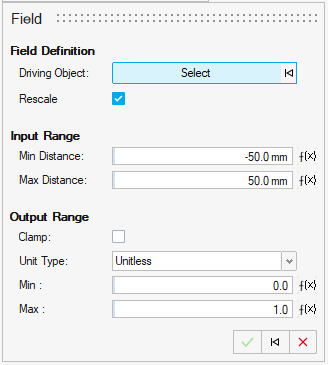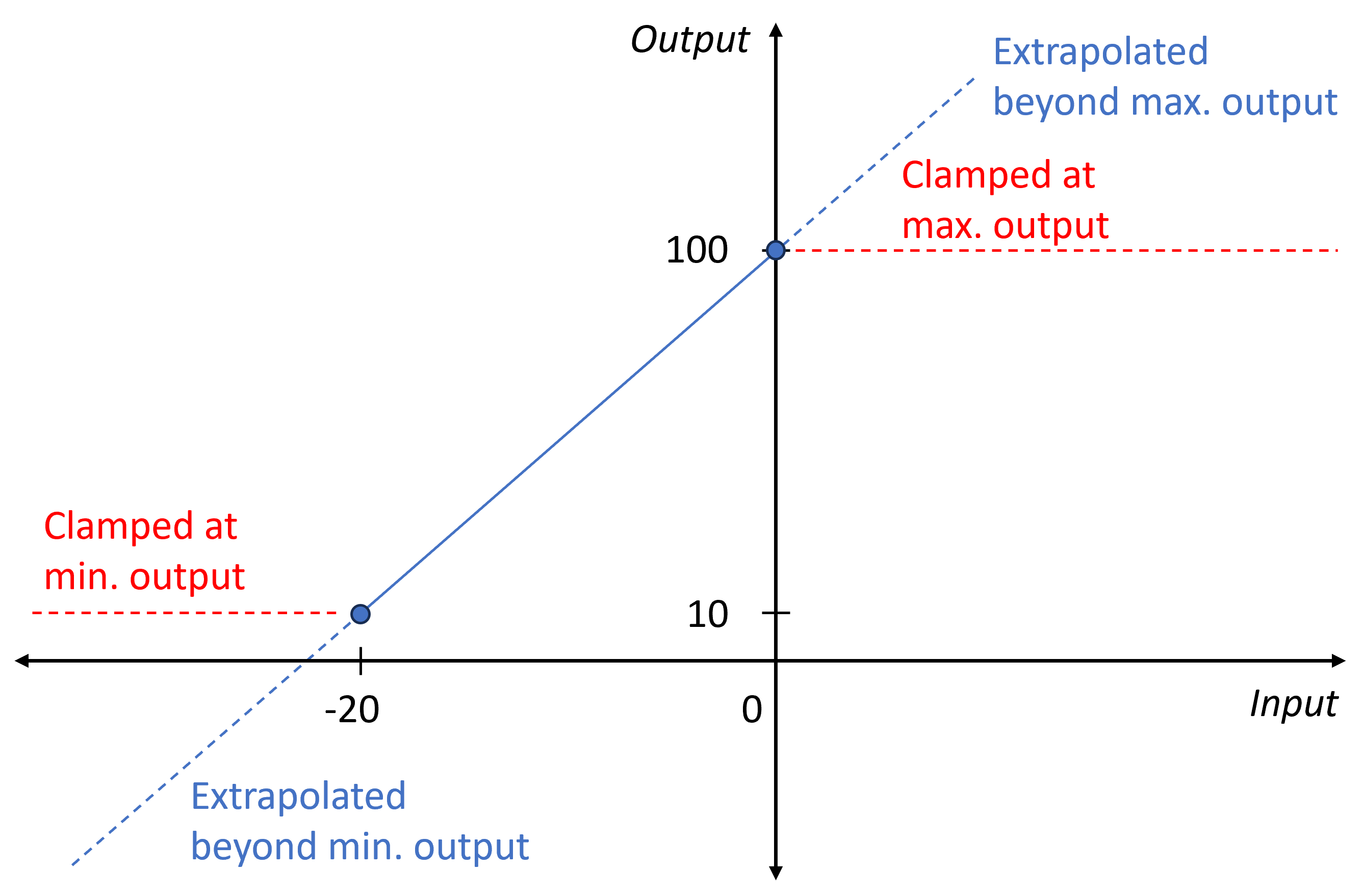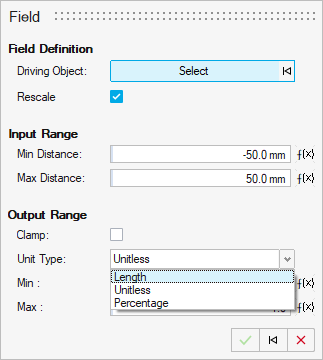Create a field to define geometry or control the parameters of an existing geometry
at every location within the bounds of the field.
In implicit modeling, the spatial properties of geometry can be controlled using a
field. This might apply to the relative density of a lattice, making it locally thicker
or thinner at different positions. It can also apply to other modification commands,
such as fillets and shell/offset amounts, giving locally larger or smaller fillet radii
and shell/offset thicknesses.A field can be thought of as a 3D grid, and each grid
point contains a signed scalar value. An illustrative example would be to create a
field based on the signed distance to a plane or line, and then rescale these
distances into density values. This field can then be used to control the relative
density of another geometry, such as a lattice, at each location in space.
You
can construct a field from a source that is not yet described in a field format and
remap field values to different ranges.

Another way to think about Rescaling
values in a field is to consider the following plot. In this illustrative example, the
input ranges from a minimum value of -20 to a maximum value of 0. The output ranges from
10 to 100. The rescaling operation is a linear transformation that maps the input range
to the output range (i.e., -20 maps to 10 and 0 maps to 100). The linear transformation
can be thought of as the straight line graph that passes through these two points (solid
blue circles). Between the minimum and maximum, values will vary linearly. Outside of
minimum and maximum, one of two things will happen. If Clamp is deactivated, values will
be linearly extrapolated unless a physical limit is reached (blue dashed lines). An
example of a physical limit arises in relative density, where values cannot exceed 100%
or go beneath 0%. If Clamp is activated, values outside of the limits will be fixed at
the limit values, represented by red dashed lines in the plot.

The field is saved automatically and can be used to
drive certain implicit parameters.



